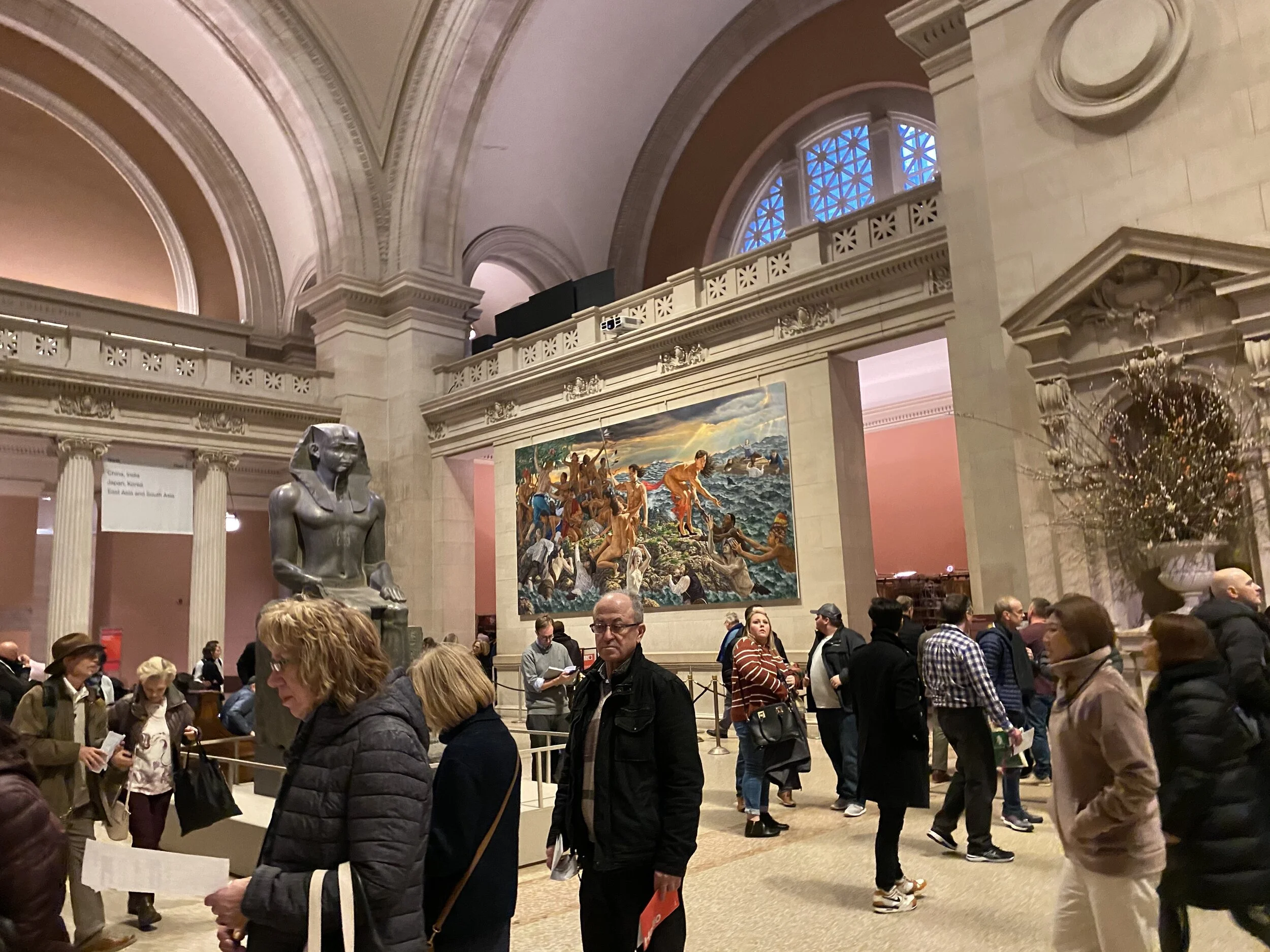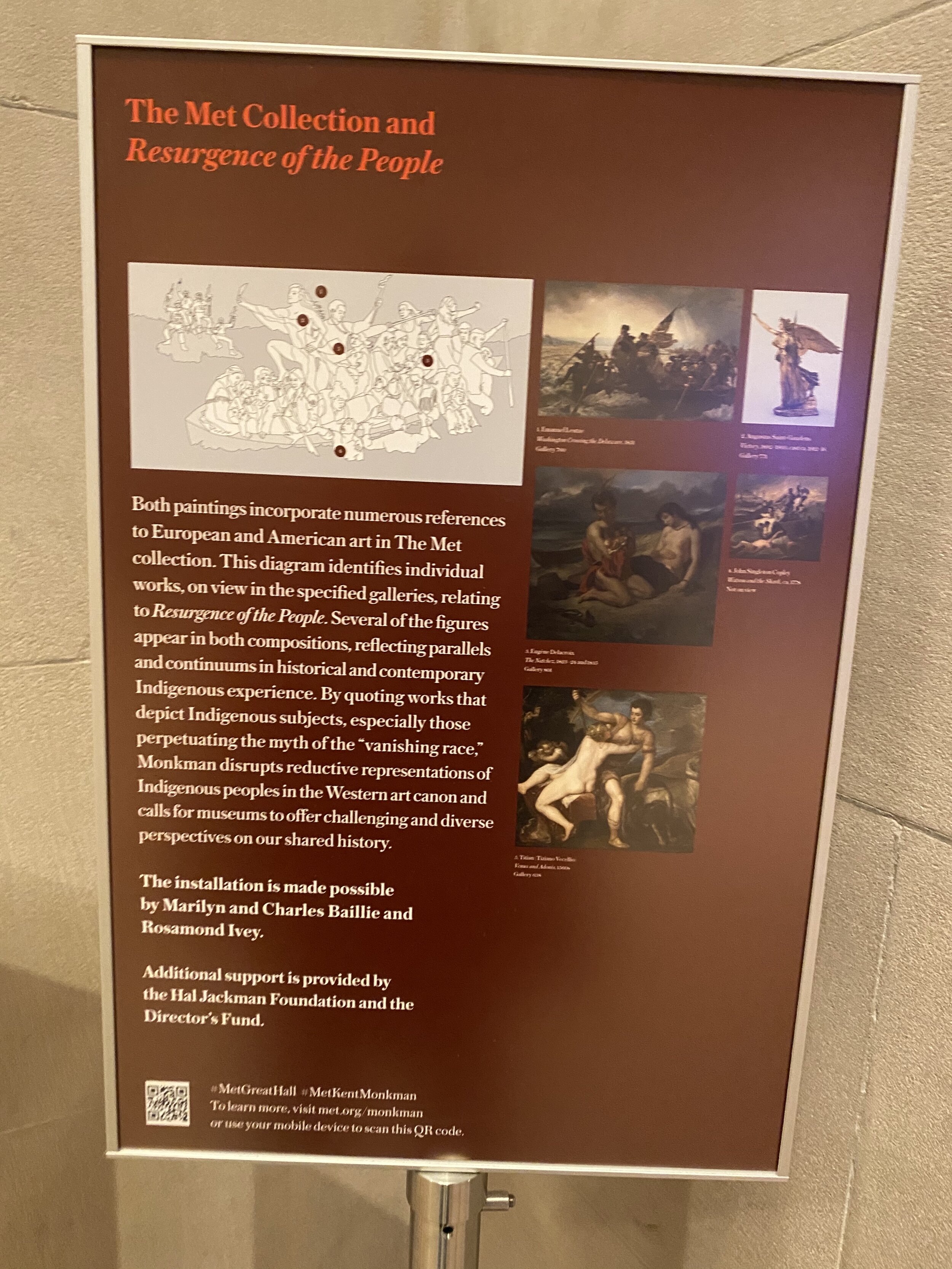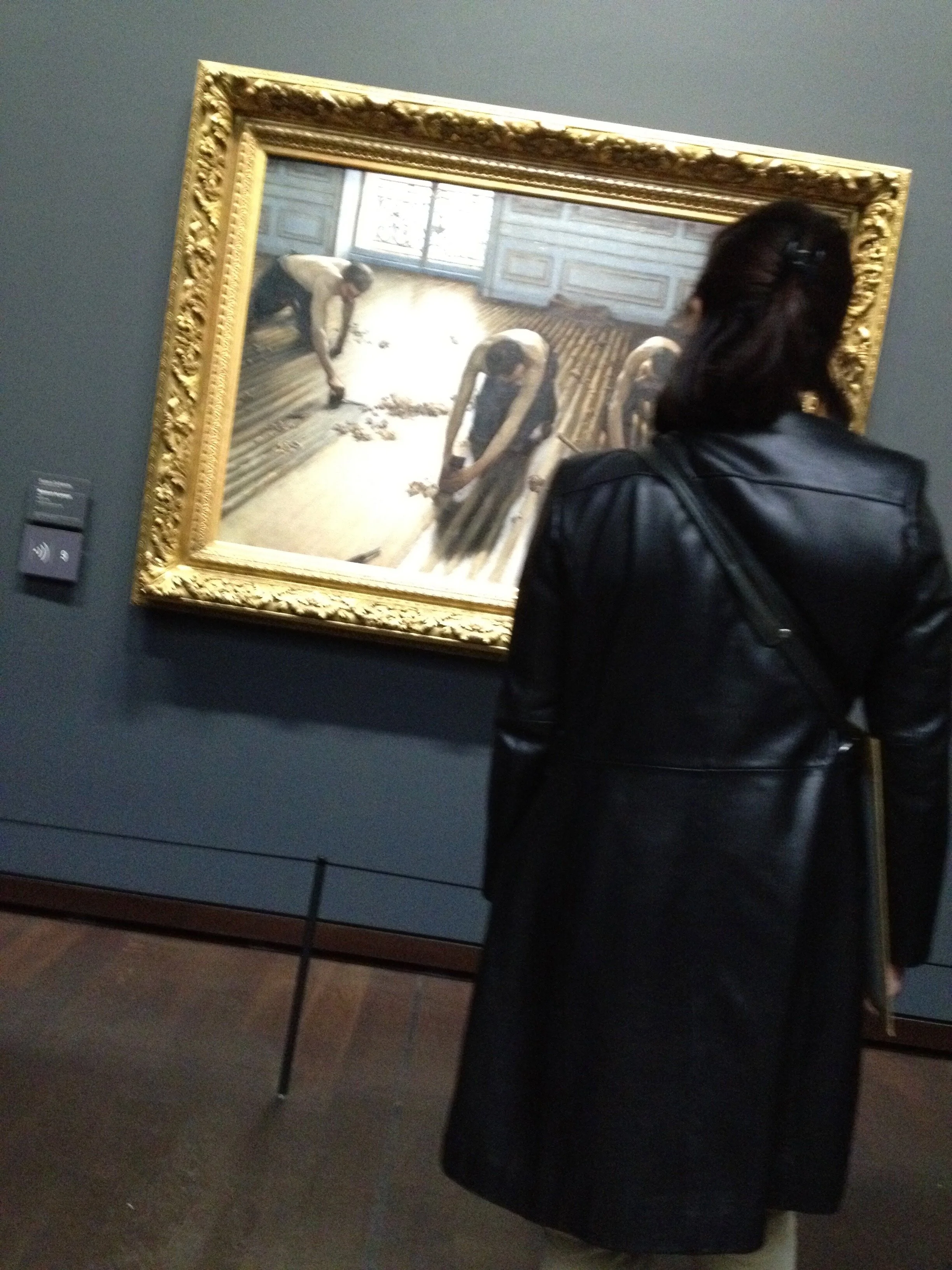Pilgrimage: Seeing Monkman at the Met
I’ve just made a pilgrimage to see Kent Monkman’s mistikôsiwak (Wooden Boat People)—a pair of large scale paintings installed in the Great Hall of the Metropolitan Museum of Art in New York. It’s spectacular and important work and I feel a heavy burden to do an adequate job of conveying how and why it is such a masterpiece.
The stakes are high. For those of you who know Monkman’s work, I want to do it justice. For those of you unfamiliar with Monkman, I want you to love it.
In the great hall, in front of cloak room across from ticket sales, next to classical statue.
Kent Monkman (Cree, b 1965) is one of the artists who inspired me to blog about my adventures in the first place. There is so much to think about and discuss here. His work is layered—even coded sometimes. It can take some effort and points of reference to fully appreciate and enjoy.
He plays with overlapping themes of art history, gender identity and sexuality, politics, racism and colonialism, as well as spirituality. Much of his work is informed by identity—both collective and individual.
Monkman’s practice is impressive. He uses a workshop approach and delegates a lot of painting to collaborating artists to execute his vision. The work ranges from installations, media art, objects/sculptures, and performance to meticulously classical fine art figurative painting. He’s comfortable moving between mediums, and moods, from whimsical to darkly sardonic to searingly confrontational when bearing witness to tragedy.
Monkman has created a trickster alter-ego “Miss Chief Eagle Testikle” (a “drag name” style mash-up of “mischief” and “egotistical”). Miss Chief is a gender/cultural cross-dressing diva featured in most of Monkman’s work. That’s where you need to start. She’s simultaneously all heart, and no nonsense—both qualities are on full display in mistikôsiwak .
These two canvases were commissioned by the Met, who invited Monkman as well as artist Wangechi Mutu to interact with its massive collection and create work for prominent public spaces at the museum. (Her sculptures are in four niches of the museums facade, it too is breathtaking, that will have to be a different post).
Welcoming the Newcomers, 2019. Acrylic on canvas, 132 x 264 in. (335.28 x 670.6 cm).
Monkman, whose work frequently channels and appropriates classical European painting, drew on the Met’s collection for inspiration…and provocation. Here’s an excellent video about the pieces and the detailed process of executing them (he’s always very articulate and accessible when he talks about art).
Resurgence of the People, 2019. Acrylic on canvas, 132 x 264 in. (335.28 x 670.6 cm).
There’s even a key, linking works in the Met’s collection to the piece.
mistikôsiwak is the most beautiful Monkman work I’ve seen. The painting glows. It’s pretty. It fits in well with these ornate Beaux Arts surroundings and the gravitas of hanging in a monumental arts institution at a major crossroads of the world..
At the same time the provocative messages in the diptych resonate deeply for me. Welcoming the Newcomers speaks to the multiple, often brutal, paths that brought people to the “New World” while Resurgence of the People conveys the need for strength, unity, bravery, and leadership if we are to survive and move forward into the future. In this modern allegory, we are all in the same boat.
Go see this if you can (no admission required for the Great Hall) and I’ll share more of Monkman’s work, lots more, in the future.







